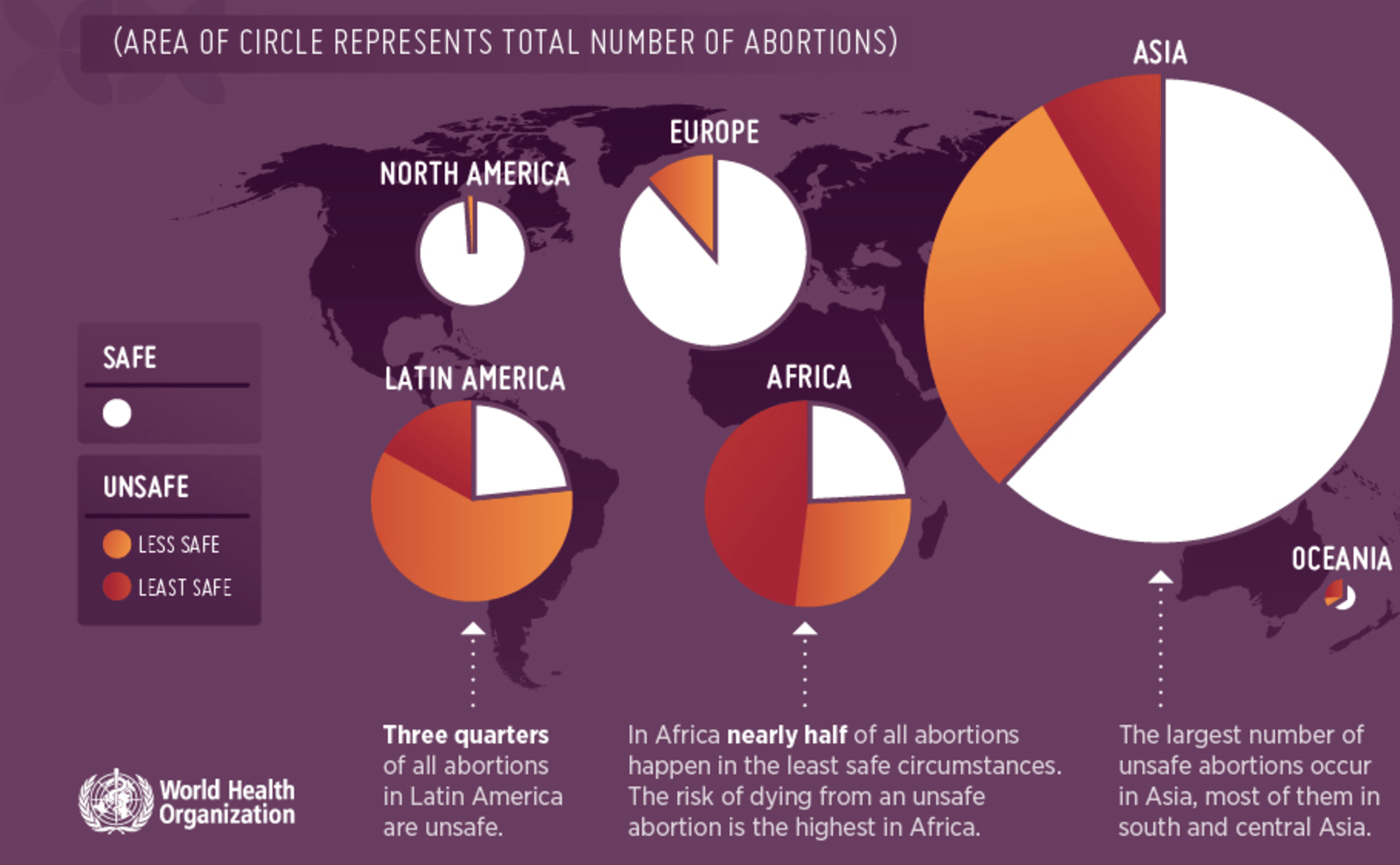45% of all abortions are around the world are “unsafe” according to a new study by the World Health Organization and Guttmacher Institute. This amounts to 25 million potentially very dangerous abortions worldwide — every year. (See map)
The study, published in the Lancet, looks at abortions statistics worldwide, and categorizes them as safe, less safe, and least safe. According to their system, a safe abortion is provided by health-care workers and with methods recommended by WHO. A less-safe abortion is done by trained providers using non-recommended methods or using a safe method such as misoprostol but without adequate information or support from heath care providers.
This is a new way of looking at abortion data. Historically they were simply categorized as safe or unsafe. Now, however, there are newer, safer methods of abortion like the misoprostol pill, but they are increasingly being used outside the medical system due to stigma or lack of legal access to abortion. This makes the data more complicated, and this new analysis is designed to address that.
What does the data say?
The study looked at data from 182 countries, they excluded small countries with populations of fewer than 100,000 inhabitants because the data trends are less reliable in populations so small. Here is what they found:
Abortion is safer in wealthy countries. From 2010–14, 55.7 million abortions occurred annually worldwide. 30.6 million were safe. Almost all abortions in wealthy countries, 87.5%, and roughly half of those in developing countries, 50.5%, were safe
Wealthy country abortion safety rates are mostly the same. Rates of safe abortion vs less and least safe were similar across wealthy countries, with one exception – Eastern Europe – where there was a lower rate of safe abortions, probably the result of outdated medical practices.
Poor countries vary. Developing countries were much less homogenous. They had very different distributions of safe, less safe, and least safe abortion rates. Countries in East Asia, for example, had abortion safety rates similar to those of wealthy countries. The proportion of safe abortions was 25% or less in all of Africa and throughout Latin America. In Latin America, among the unsafe abortions, most were “less safe.” In Africa, most unsafe abortions were “least safe.” The highest proportion of least safe abortions occurred in middle Africa, followed by western Africa and eastern Africa.
Legal abortions are safe abortions. 87.4% of all abortions in the 57 countries in which abortion was available on request were safe. In contrast, only 25.2% of abortions were safe in the 62 countries where abortion was completely banned or allowed only to save the woman’s life or to preserve her physical health. In addition, in these legally restrictive countries, nearly a third of abortions were categorized as least safe.
Countries with lower abortion rates have safer abortions. The sub-regions with the highest proportions of safe abortions (northern Europe and northern America) also showed the lowest incidence of abortion.
Unsafe abortions mean maternal deaths. Sub-regions with the highest proportions of least safe abortions also had the highest case fatality rates. The study authors suggest that this could be due to the more serious complications that result from least-safe abortions combined with poor health infrastructure to treat these complications when they occur.

Why is this data important?
A safe abortion has a very low risk of complications; fewer complications than carrying a pregnancy to term. If we care about women’s health, we need to care about abortion safety. This data demonstrates that national income is not the only factor in abortion safety. Stigma and legality have a major impact, as does health care provider training. Safe abortion is possible in low-resource environments.
Finally, if the goal is to reduce the incidence of abortion, this data indicates that providing access to safe abortion doesn’t increase overall its incidence.
